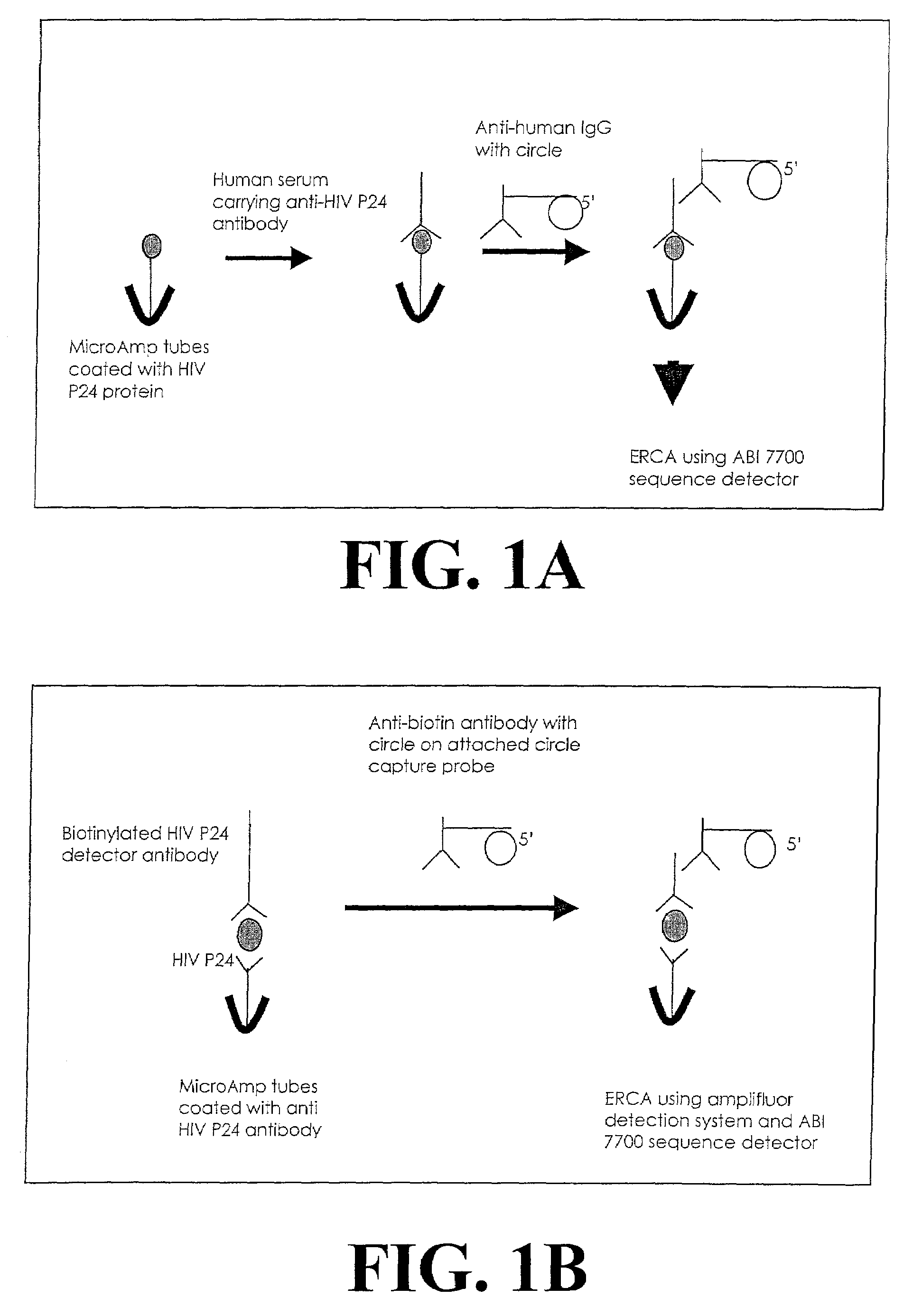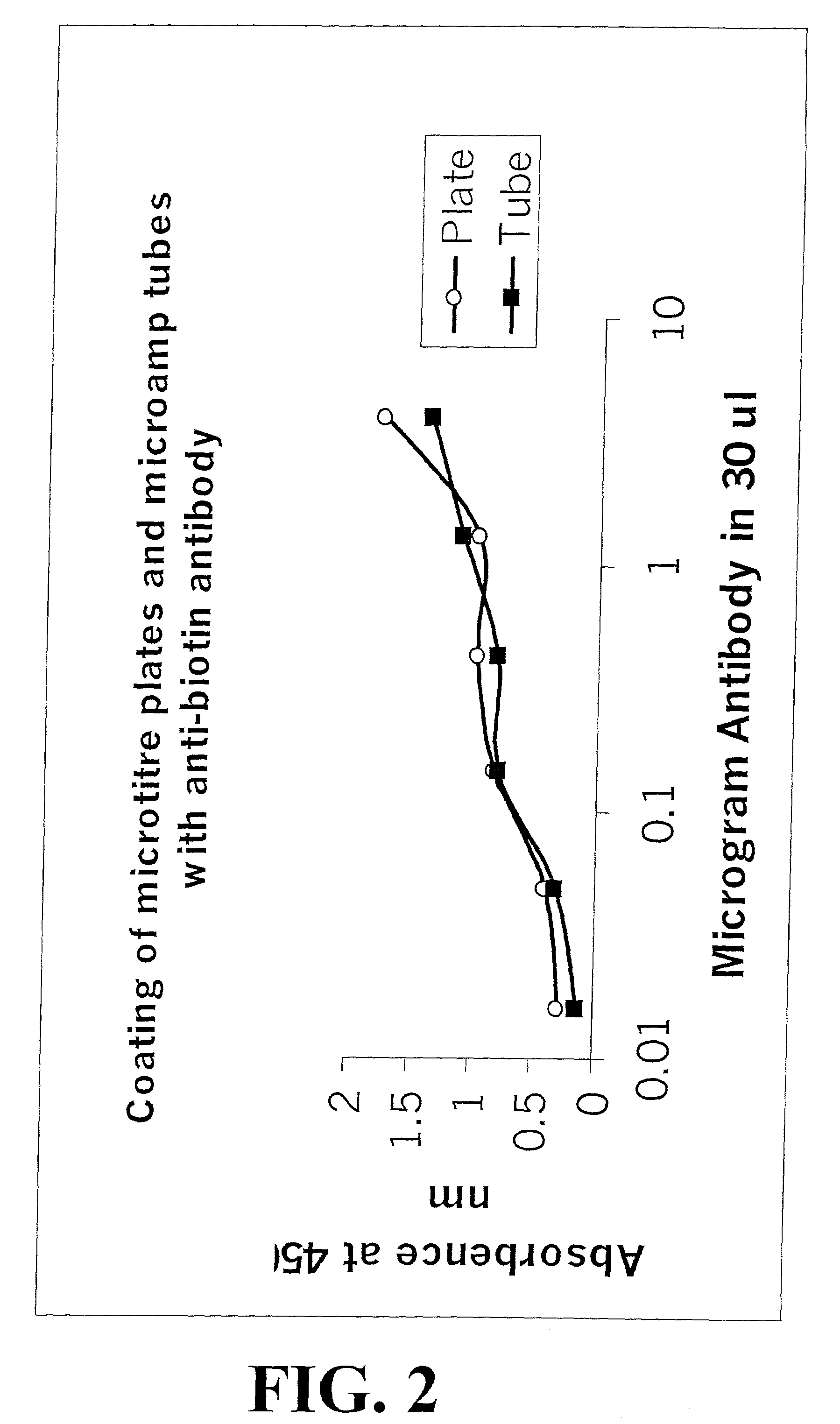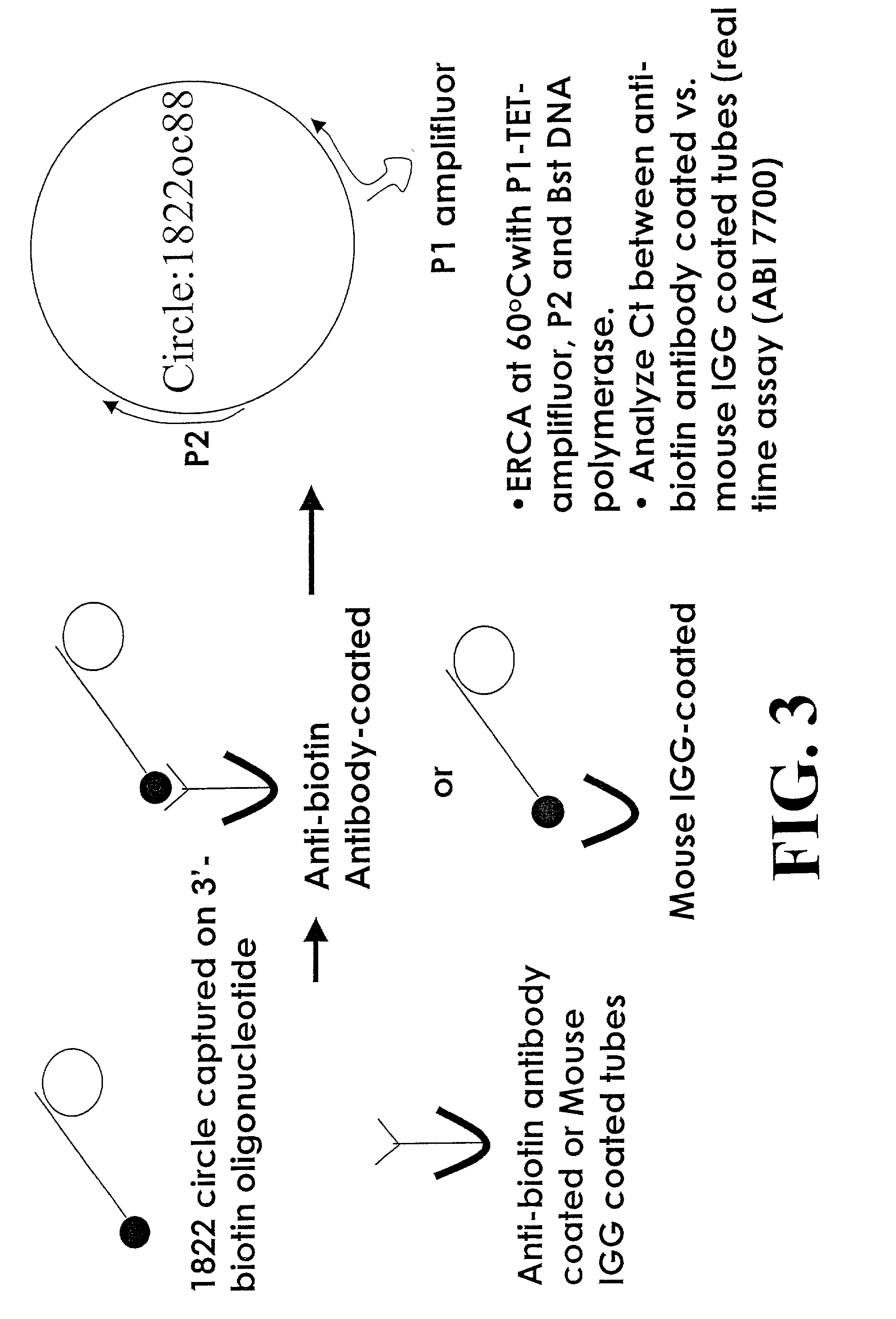Detection method using dissociated rolling circle amplification
a technology of dissociation and amplification, applied in the field of detection of analytes, can solve the problems of large production of dna and large amount of nucleic acid from each primer
- Summary
- Abstract
- Description
- Claims
- Application Information
AI Technical Summary
Benefits of technology
Problems solved by technology
Method used
Image
Examples
example 1
A. Example 1
Coating of Micro Amp Polypropylene Tubes with Antibody
[0237]This example demonstrates that Micro Amp tubes can be coated with antibody as efficiently as microtiter plates. Micro Amp polypropylene tubes (appropriate for use in ABI 7700 sequence detector) and polystyrene ELISA microtiter plates were coated with variable amounts of anti-biotin antibody. For this purpose, 40 μl of desired antibody, in 50 mM carbonate buffer pH 9.6, was incubated overnight at 4° C. in these tubes. Subsequent to incubation, any uncoated material was washed with 150 mM phosphate buffer saline, pH 7.2. Subsequent to washing, coated anti-biotin antibody was recognized by 1 μg / ml of biotin coupled horse reddish peroxidase (HRP). Subsequent to washing of unbound proteins, the relative amounts of bound HRP were detected by using OPD assay. After 10-15 min, the assay mixture was transferred from Micro Amp tubes to Costar plates and the absorbance of the assay mixture was evaluated at 450 nm using a p...
example 2
B. Example 2
Detection of Amplification Target Circles, Captured on Antibody-coated Micro Amp Tubes, by Immuno ERCA Using ABI 7700 Sequence Detector Instrument
[0238]This example demonstrates amplification and detection of captured amplification target circles. The strategy for this example is shown in FIG. 3. In this example, variable amounts of reporter binding molecules were used to assess, in part, the effect of the amount of reporter binding molecules on signal over background. Micro Amp tubes were coated, as described in Example 1, with 30 μl of 10 μg / ml of either anti-biotin antibody or mouse IgG. These antibodies serve as “analytes” in this example. Subsequent to washing, the tubes were blocked using blocking solution (blocker casein in PBS, Pierce Chemicals) and washed again with PBS carrying 0.05% Tween 20. In a separate tube, amplification target circle 1822oc88 was annealed to 3′-biotin labeled circle capture probe in 2×SSC. The amplification target circle / circle capture p...
example 3
C. Example 3
Detection of the Binding of Variable Number of Amplification Target Circles Using Fixed Number of Amplification Target Circles in Immuno ERCA with Amplifluors™
[0239]This example demonstrates detection binding of a fixed number of amplification target circles to a variable number of circle capture probes. The strategy for this example is shown in FIG. 5. Because the number of amplification target circles used were the same, the background caused by the circles was expected to be similar in all of the assays. Anti biotin antibody-coated or mouse IgG-coated Micro Amp tubes were used to incubate various amounts of 3′-biotin labeled circle capture probes, in PBS. Subsequent to the removal of unbound probes, 1×106 1822oc88 amplification target circles, in 2×SSC, were used for annealing to antibody-bound circle capture probes at 37° C. for 1 hour. Subsequent to the washing of excess circles, probe-annealed circles were detected by ERCA as indicated before. Amplification product...
PUM
| Property | Measurement | Unit |
|---|---|---|
| volumes | aaaaa | aaaaa |
| pH | aaaaa | aaaaa |
| pH | aaaaa | aaaaa |
Abstract
Description
Claims
Application Information
 Login to View More
Login to View More - R&D
- Intellectual Property
- Life Sciences
- Materials
- Tech Scout
- Unparalleled Data Quality
- Higher Quality Content
- 60% Fewer Hallucinations
Browse by: Latest US Patents, China's latest patents, Technical Efficacy Thesaurus, Application Domain, Technology Topic, Popular Technical Reports.
© 2025 PatSnap. All rights reserved.Legal|Privacy policy|Modern Slavery Act Transparency Statement|Sitemap|About US| Contact US: help@patsnap.com



